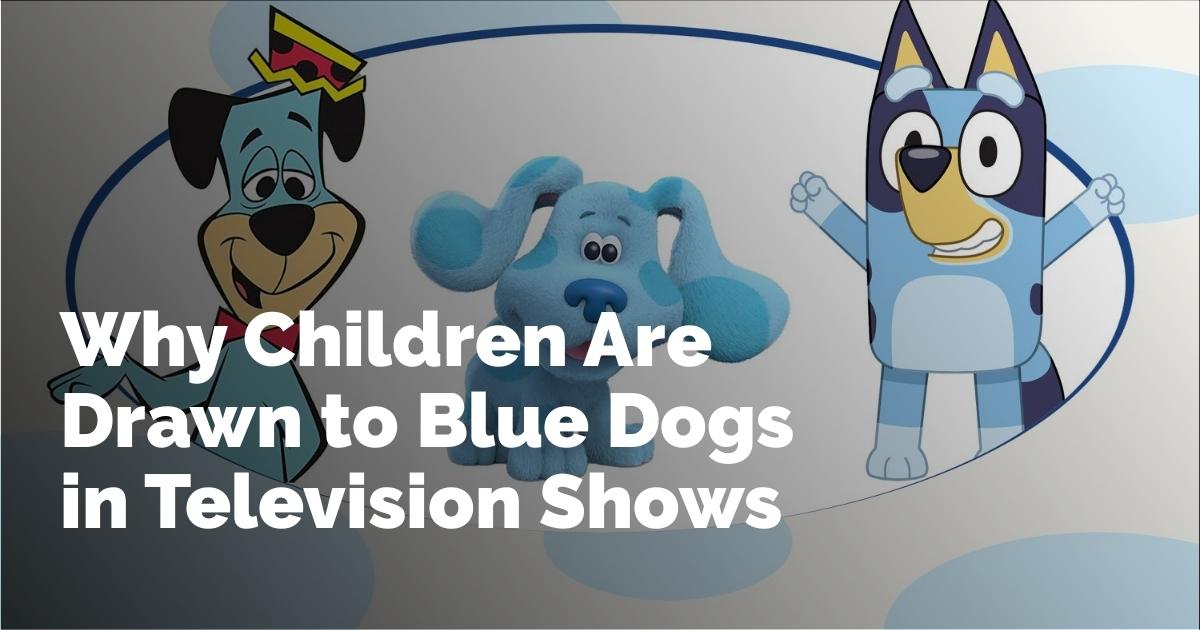Why Kids Are Fascinated by Blue Dogs in TV Shows
As any parent with a TV-watching toddler knows, the allure of blue dogs like Bluey, Blue from Blue's Clues, and Huckleberry Hound is undeniable. These characters are more than just animated pups; they hold a special place in the hearts of children worldwide. But what is it about these blue canines that captivate the young audience so effectively? To uncover this intriguing phenomenon, let's delve into the psychology and cultural impact of these beloved blue dogs.
The Appeal of Blue Dogs: A Psychological Perspective
Children's fascination with blue dogs isn't just a random whimsy. It ties back to a fascinating intersection of color psychology and childhood development. Colors play a crucial role in influencing emotions and moods, and blue, in particular, is associated with calming and comforting effects. According to Reena B. Patel, a psychologist, and licensed educational board-certified behavior analyst, the color blue is known for alleviating anxiety and creating a sense of contentment. This calming effect makes blue dogs particularly appealing, as they are seen as safe and soothing figures in the tumultuous world of a toddler.
Child psychologist Dr. Sanam Hafeez also highlights children's penchant for novelty and imagination, which adds another layer to the blue dog appeal. Children are often drawn to things that are unusual yet inviting, and the prospect of a blue dog invites them into a world where the lines between reality and imagination are delightfully blurred. These unique, non-traditional attributes of blue dogs stimulate young imaginations, making them ideal protagonists in the narratives of children’s shows.
Iconic Blue Dogs in Children's Television
Blue from "Blue's Clues"
Since its debut in 1996, "Blue's Clues" has been a staple of children's television, renowned for its engaging format and educational content. Blue, the friendly and adventurous puppy, serves as a curious guide, leading children on journeys that encourage critical thinking and problem-solving skills. Dr. Hafeez emphasizes how these adventures provide an interactive learning experience, making Blue an enduring favorite among kids and parents alike.
Huckleberry Hound from "The Huckleberry Hound Show"
For the generation of the late 1950s, Huckleberry Hound, with his laid-back demeanor and charming southern drawl, was the beloved blue dog of the era. His calm, humorous personality resonated deeply with children, fostering a sense of comfort and accessibility. His influence laid down a blueprint for the likable and trustable dog characters that followed.
Bluey from "Bluey"
Fast forward to modern times, and Bluey has taken the world by storm since its introduction in 2018. Initially targeting 5- to 7-year-olds, the show's relatable storylines and heartfelt humor have captured audiences of all ages. According to Patel, Bluey's short yet impactful stories offer not just entertainment but also relatable life lessons, capturing the dynamics of family and childhood adventures with a refreshing positivity. This Australian import has found its way into countless homes, securing its spot as a cultural phenomenon.
The Significance of Color in Children's Media
Colors can significantly influence a child's experience and engagement with media. Patel explains that the strategic use of calming colors like blue in children’s programming ensures a peaceful viewing experience. This color, consistent with blue space theory, does much to soothe and relax the young viewer, creating a psychologically safe space in which they can immerse themselves.
Moreover, color association helps children identify and understand the world around them—a skill that is particularly heightened in children who have limited verbal understanding. Hafeez notes that light colors, such as those often seen in characters like Bluey, are associated with positive emotions, helping communicate friendliness and safety. The whimsical and vibrant color schemes unique to animated worlds assist children in decoding narrative cues and character roles, thereby enriching their overall viewing experience.
The Unwavering Popularity of Blue Dogs
Whether it's a nostalgic connection to beloved characters or the inherent comfort afforded by their color, blue dogs have firmly entrenched themselves in children's media. Their presence in popular culture can be traced back decades and continues today, underpinned by the power of color psychology and the engaging narratives fostered by skillful storytelling.
In conclusion, blue dogs in children’s television are more than bright pixels on a screen; they embody a careful blend of psychological insight and creative storytelling that resonates with children on a fundamental level. As long as kids revel in the exploration of boundless imagination and creativity, blue dogs will remain central to their cherished viewing experiences, continuing to delight and inspire young minds around the world.
출처 : Original Source

